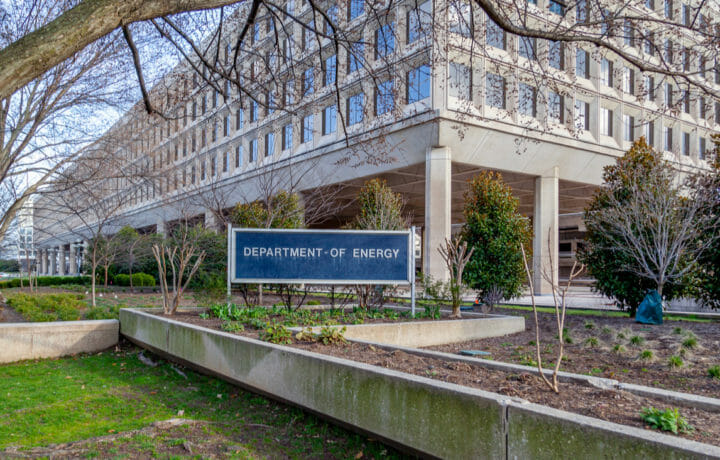The Department of Energy (DOE) holds the security clearances of approximately 90,000 employees. DOE maintains its own unique security clearance process for clearance holders under the Atomic Energy Act of 1954 (AEA). The AEA governs the safeguarding of nuclear materials and facilities in the United States and requires that access to Restricted Data be granted only to those who have been adjudicated favorably. While DOE runs its own security clearance process, the rules governing it are similar to those in other federal agencies.
Security Clearance Appeal Procedures through DoE
The security clearance process and appeals for DoE entities are controlled by 10 C.F.R. Part 710. DOE adheres to Executive Order 12968 and Security Executive Agent Directive 4, but the security clearance process falls under Title 10 of the Code of Federal Regulations. When issues with a security clearance arise, the DOE security clearance process usually unfolds as listed below.
1. Security Concerns are Identified by DoE
The first step in the security clearance review process for DOE occurs when an individual seeking or holding a security clearance is identified as having security concerns under SEAD 4. The local director of security will review these security issues. After review. they will either be resolved favorably or moved to the next step in the process for adjudication.
2. Notice to the Individual
If the security concerns involving an individual have not been resolved, the individual will receive a formal letter explaining their options for administrative review. Along with this letter, the individual will receive a document entitled “Summary of Security Concerns” which describes the security issues in more detail. The Summary is essentially DOE’s version of the Statement of Reasons. The individual can either request that the matter be reviewed by the Manager based on existing information or by seeking a personal appearance (hearing) before a DOE administrative judge. A request for a hearing must be timely, or it can be waived. The current deadline is 20 days. Failure to request a hearing within the prescribed timeframe can result in the loss of a security clearance.
A. Requesting Manager Review
If the individual requests a Manager review of the security concerns instead of a Personal Appearance, the process is different. The Manager will review the existing information in the case to make a determination as to whether or not to grant access. In most cases, we recommend that individuals request a hearing before an administrative judge. Unless an extension of time is granted by the Director, the Manager’s initial decision as to whether to grant or deny the security clearance should be made within 15 calendar days of the date of receipt of the information in the case.
B. Requesting a Personal Appearance (Hearing)
If a hearing is requested, the next step in a DOE security clearance adjudication is for the individual to present their case before an administrative judge in the DOE’s Office of Hearings and Appeals (OHA). DOE will be represented by their own attorney, and the individual has the option to hire their own counsel. Prior to the hearing, DOE Counsel and the individual (or their attorney) will exchange witness lists and proposed exhibits. The administrative judge will evaluate them and make rulings, as needed, about their use in the security clearance hearing. The hearing is typically conducted by videoconference these days, usually through Microsoft Teams.
During a clearance hearing, there is an opportunity for opening and closing statements and the examination of witnesses. Usually, the individual, who has the burden of proof, will put forward the majority of witnesses, and they will then be cross-examined by the other side. The administrative judge also has the ability to ask witnesses questions. To ensure that there is a clear record, there will also be a court reporter present to make a record of all testimony. After the hearing is over, the administrative judge will issue a decision within 30 days of receiving the hearing transcript. The decision will either grant/restore or deny the individual’s security clearance.
3. Appeal of the Administrative Judge or Manager’s Decision
If the decision of the administrative judge or manager is unfavorable, the individual can appeal it within 30 days of receipt of the decision pursuant to 10 CFR 710.28 and 10 CFR 710.29. Both appeals will go to the DOE Appeal Panel. The Appeal Panel consists of 3 members and can uphold, reverse, or remand a decision for further review. If an individual’s appeal is denied, the decision will be final, and they can subsequently apply for reconsideration after one year.
4. Reconsideration
If reconsideration is sought by an individual after a one-year period, then it will be very important to show what has changed since the initial decision. Reconsideration for a DOE security clearance requires that the person: (1) have a bona fide offer of employment requiring a DOE security clearance and (2) be able to show that “there is either material and relevant new evidence which the individual and the individual’s representatives were without fault in failing to present earlier, or convincing evidence of rehabilitation or reformation.” If reconsideration is denied, the individual can reapply after an additional year.
Final Thoughts
The DOE security clearance process is slightly different that most other federal agencies. When facing a security clearance appeal with DOE agencies, it is important to consider hiring an attorney familiar with the unique DOE security clearance appeals process.
This article is intended as general information only and should not be construed as legal advice. Although the information is believed to be accurate as of the publication date, no guarantee or warranty is offered or implied. Laws, regulations, and government policies are always subject to change, and the information provided herein may not provide a complete or current analysis of the topic or other pertinent considerations. Consult an attorney regarding your specific situation.




